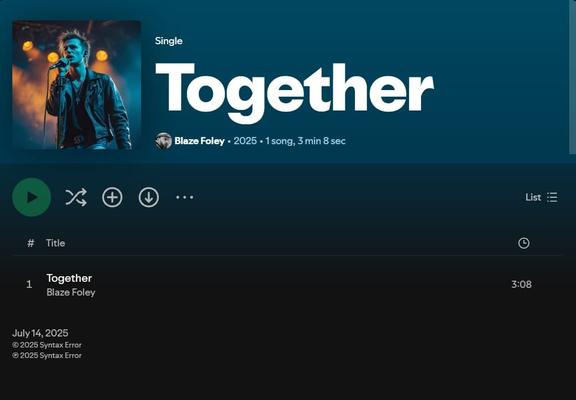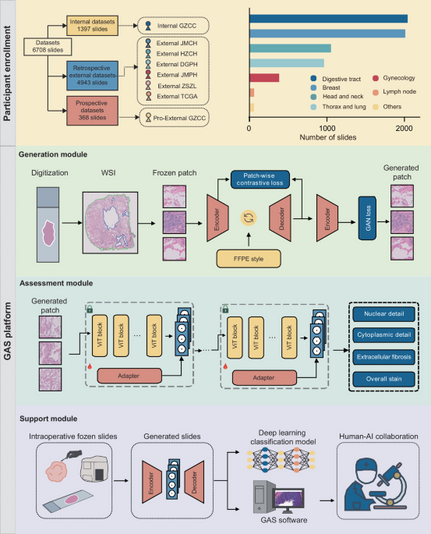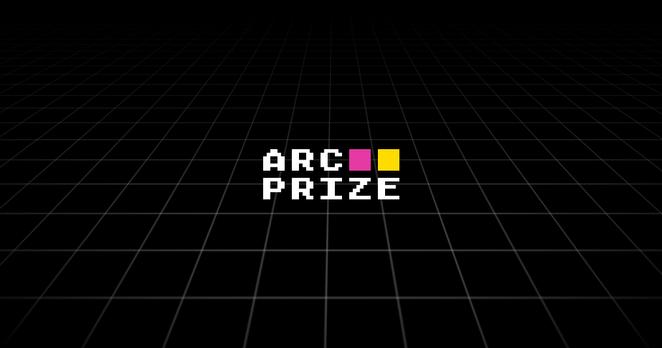I used to like #AI, before it went mainstream.. *smokes cigarette*
2025 summed up in one headline…
𝙎𝙥𝙤𝙩𝙞𝙛𝙮 𝙋𝙪𝙗𝙡𝙞𝙨𝙝𝙚𝙨 𝘼𝙄-𝙂𝙚𝙣𝙚𝙧𝙖𝙩𝙚𝙙 𝙎𝙤𝙣𝙜𝙨 𝙁𝙧𝙤𝙢 𝘿𝙚𝙖𝙙 𝘼𝙧𝙩𝙞𝙨𝙩𝙨 𝙒𝙞𝙩𝙝𝙤𝙪𝙩 𝙋𝙚𝙧𝙢𝙞𝙨𝙨𝙞𝙤𝙣
https://www.404media.co/spotify-publishes-ai-generated-songs-from-dead-artists-without-permission

On reflection, I think the big mistake is the conflation of #AI with #LLM and #MachineLearning.
There are genuine exciting advances in ML with applications all over the place, in science, (not least in my own research group looking at high resolution regional climate downscaling), health diagnostics, defence etc. But these are not the AIs that journalists are talking about, nor that are really related the LLMs.
They're still good uses of GPUs and will probably produce economic benefits, but probably not the multi- trillion ones the pundits seem to be expecting
https://fediscience.org/@Ruth_Mottram/114896256761569397
Ruth_Mottram - My main problem with @edzitron.com 's piece on the #AIbubble is that I agree with so much of it.
I'm now wondering if I've missed something about #LLMs? The numbers and implications for stock markets are terrifyingly huge!
AI-Weekly for Tuesday, July 22, 2025 - Issue 174
https://ai-weekly.ai/newsletter-07-22-2025/

A Mind Vault Solutions, Ltd. Publication
#ai #news #ainews #artificialintelligence #aiweekly #technology #tech #technews #techtrends #machinelearning #robotics #datascience #airesearch #futuretech
Subscribers: 45,524 
AI-Weekly for Tuesday, July 22, 2025 - Issue 174
https://ai-weekly.ai/newsletter-07-22-2025/

A Mind Vault Solutions, Ltd. Publication
#ai #news #ainews #artificialintelligence #aiweekly #technology #tech #technews #techtrends #machinelearning #robotics #datascience #airesearch #futuretech
Subscribers: 45,524 
Google expands Ad Manager partner guidelines with machine learning restrictions https://ppc.land/google-expands-ad-manager-partner-guidelines-with-machine-learning-restrictions/ #Google #AdManager #MachineLearning #AI #DigitalMarketing
https://www.europesays.com/us/81998/ Machine learning in Alzheimer’s disease genetics #DiseasesOfTheNervousSystem #GeneticAssociationStudy #Genetics #HumanitiesAndSocialSciences #MachineLearning #multidisciplinary #Science #UnitedStates #UnitedStates #US
OpenAI jumps gun on International Math Olympiad gold medal announcement https://arstechni.ca/R7De #InternationalMathematicalOlympiad #mathematicalreasoning #largelanguagemodels #simulatedreasoning #reasoningresearch #machinelearning #AIbenchmarks #proofsystems #AIresearch #NoamBrown #SherylHsu #SRmodels #AlexWei #Biz&IT #google #openai #GPT-4 #GPT-5 #AI

OpenAI jumps gun on International Math Olympiad gold medal announcement - On Saturday, OpenAI researcher Alexander Wei announced that ... - https://arstechnica.com/ai/2025/07/openai-jumps-gun-on-international-math-olympiad-gold-medal-announcement/ #internationalmathematicalolympiad #mathematicalreasoning #largelanguagemodels #simulatedreasoning #reasoningresearch #machinelearning #aibenchmarks #proofsystems #airesearch #noambrown #sherylhsu #srmodels #alexwei #biz #google #openai #ai

https://www.europesays.com/us/79992/ How travel marketers can navigate AI evolution of search #advertising #ai #analytics #ArtificialIntelligence #BackOffice #DigitalIdentity #FrontOffice #GenerativeAI #Home2ndTier #hotel #ITServices #MachineLearning #marketing #Mobile #News #PhocuswrightResearch #research #search #SocialMedia #Technology #TravelInspiration #TravelPlanning #UnitedStates #UnitedStates #US
How travel marketers can navigate AI evolution of search
Artificial intelligence (AI) has snaked its …
#NewsBeep #News #US #USA #UnitedStates #UnitedStatesOfAmerica #Artificialintelligence #advertising #AI #analytics #ArtificialIntelligence #BackOffice #DigitalIdentity #FrontOffice #GenerativeAI #Home2ndTier #hotel #ITServices #machinelearning #marketing #Mobile #PhocuswrightResearch #Research #search #SocialMedia #Technology #TravelInspiration #TravelPlanning
https://www.newsbeep.com/us/25449/
https://www.europesays.com/us/79859/ AI reshapes ARDS care by predicting risk, guiding ventilation, and personalizing treatment #AcuteRespiratoryDistressSyndrome #ai #ArtificialIntelligence #disability #ECMO #Imaging #IntensiveCare #laboratory #MachineLearning #medicine #Membrane #mortality #Phenotype #research #Respiratory #Syndrome #Technology #UnitedStates #UnitedStates #US #Ventilator
Reminder (probably not for the last time at #ismbeccb2025) that high quality data resources are critical to #MachineLearning #AI in #ComputationalBiology
John Jumper: “In #MachineLearning we tell these stories of great ideas, but it’s the ideas in between which make the difference.” #ismbeccb2025
First keynote of #ismbeccb2025: John Jumper, first but not last surely with #MachineLearning #AI at the center.
We all know about #AlphaFold, John will tell us about the challenges along the way. Good start! “Evolution is important”
https://www.europesays.com/us/77484/ An end-to-end multifunctional AI platform for intraoperative diagnosis #ai #ArtificialIntelligence #Biomedicine #biotechnology #diagnosis #general #MachineLearning #Medicine/PublicHealth #Technology #UnitedStates #UnitedStates #US

I just discovered the ARC-AGI initiative and the associated test to estimate how close "AI" models are from #AGI
While I found the initiative interesting, I'm not sure I understand what in this test really guarantees that the model is capable of some form of generalization and problem-solving.
Wouldn't it be possible for specialized pattern-matching/discovering algorithms to solve such problems?
I imagine some computer scientists, mathematicians or computational neuroscientists have already had a look at this, so would anyone knows of some articles/blogs on the topic?
Maybe @wim_v12e? Is this something you already looked at?

Prediction of birthweight with early and mid-pregnancy antenatal markers utilising machine learning and explainable artificial intelligence https://www.byteseu.com/1207716/ #AI #AntenatalCare #ArtificialIntelligence #BiomedicalEngineering #Diagnosis #engineering #ExperimentalModelsOfDisease #ExplainableArtificialIntelligence #HealthCare #HumanitiesAndSocialSciences #LowBirthweight #MachineLearning #MedicalResearch #multidisciplinary #OutcomesResearch #RiskFactors #Science
Is complex query answering really complex? A paper at the International Conference on Machine Learning (#ICML2025) presented by Cosimo Gregucci, PhD student at @UniStuttgartAI @Uni_Stuttgart, discussed this question.
In this paper, Cosimo Gregucci, Bo Xiong, Daniel Hernández (@daniel), Lorenzo Loconte, Pasquale Minervini (@pminervini), Steffen Staab, and Antonio Vergari (@nolovedeeplearning) reveal that the “good” performance of SoTA approaches predominantly comes from answers that can be boiled down to single link prediction. Current neural and hybrid solvers can exploit (different) forms of triple memorization to make complex queries much easier. The authors confirm this by reporting the performance of these methods in a stratified analysis and by proposing a hybrid solver, CQD-Hybrid, which, while being a simple extension of an old method like CQD, can be very competitive against other SoTA models.
The paper proposed a way to make query answering benchmarks more challenging in order to advance science.
















